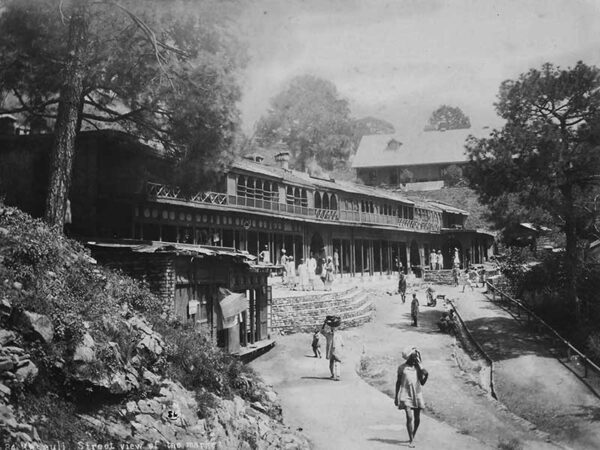British Connection
Kasauli More Than
150 years ago

This Is How Kasauli Looked Like More Than 150 Years Ago | Video
Kasauli or Kussowlie as Britishers called it was founded in 1842. In the early decades of its development, there were just military barracks, the Christ church, and few bungalows. Then gradually a bazaar came up and the number of houses also increased.
To reach Kasauli at that time, you either needed to walk on foot or ride a pony. Or, if you were a British, you could hire a Jhampan, a sedan chair, carried by local men at that time. The old road from Kalka, the first town located in the foothills, to Kasauli, was so narrow and steep that you could not even use carts.
Here are some old pictures, lithographs, watercolors and sketches that give us a peek into a Kasauli that existed more than 150 years ago. In these images, Kasauli appears to be a peaceful and even a lonesome place. Most of these images depict a beautiful Kasauli in the making. Have a look yourself.
Kussowlie and the plains beyond. Sunrise, 1852
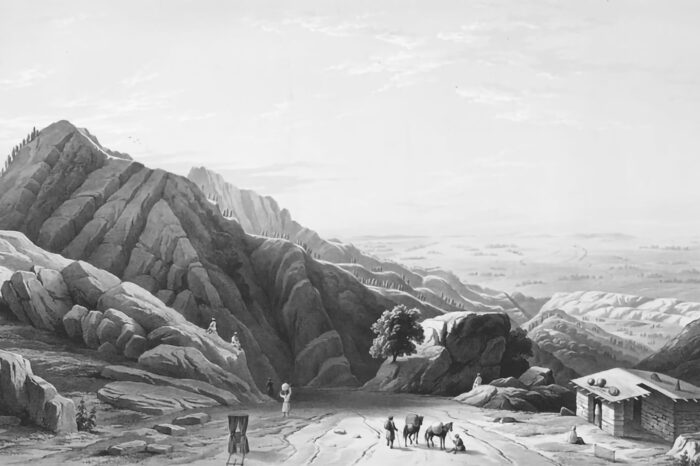
Titled ‘Kussowlie and the plains beyond. Sunrise,’ this lithograph was taken in 1852, 10 years after Kasauli was founded, from the collection ‘Views in Himalayas’ by Mrs WLL Scott. Sketched at sunrise, one can see the hills and the plains beyond in the background.
There is a Jhampan on the ground and turbaned men, most probably porters, sitting on the rocks. There are also two ponies in front of what looks like a hut with a woman sitting on ground near a charpoy. Another woman can be seen standing on the threshold of the hut. The sketch is from the days when the work on developing Kasauli was being carried on.
Kasauli was founded as a convalescent town where British soldiers could recuperate. Scott, who travelled to the hills at that time to sketch important scenes in and around Shimla, visited Kasauli also as it was on the way. About Kasauli, Scott wrote that, “During the first two miles of ascent, the invalid (ill or wounded, mostly a British soldier) experiences the most refreshing change, and by the time he reaches Kasauli the air is quite cold.”
Kussowlie between Simla and the plains, 1868
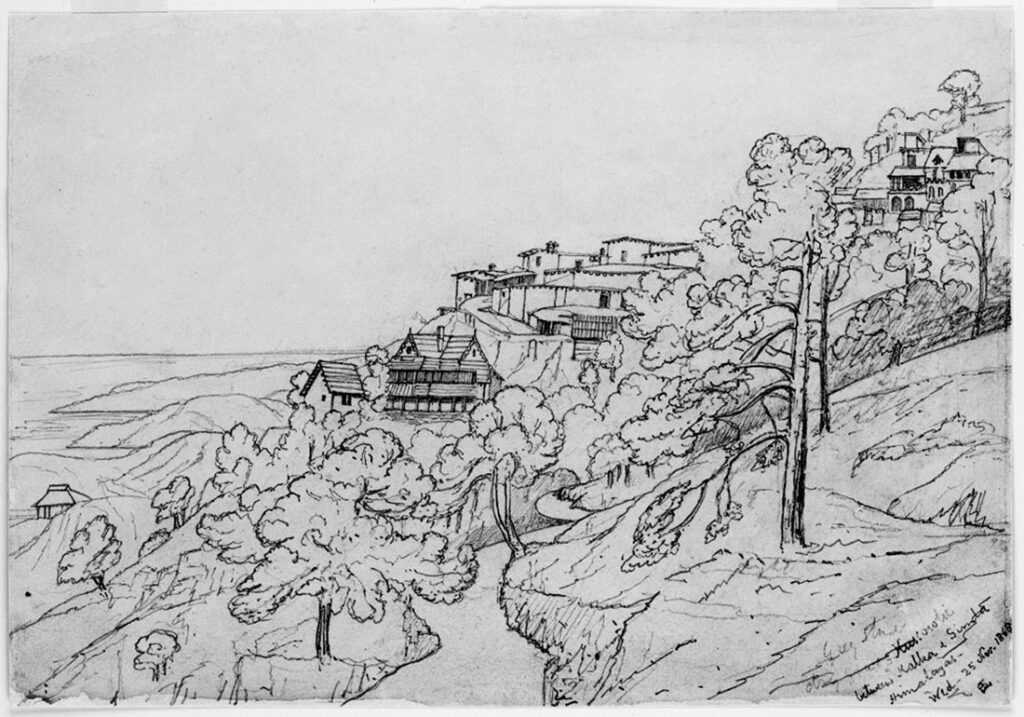
Dated November 25, 1868, ‘Kussowlie between Simla and the plains,’ a pencil drawing, was done by Stanley Leighton, an English barrister and artist, who visited India in 1867-68. In the 1860s, many bungalows had come up in Kasauli with the rise in the number of British settlers. The sketch depicts bungalows on a hill.
Road to Kasauli, 1885
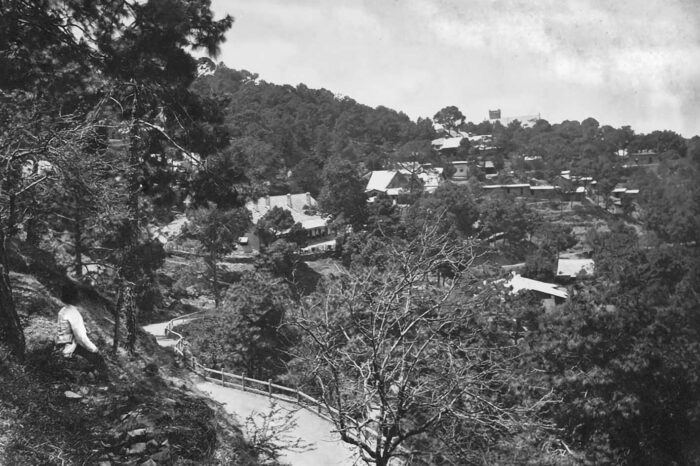
This photograph was clicked by Col James Henry Erskine Reid in 1885 and is taken from the ‘Macnabb collection: Album of miscellaneous views.’ In this photograph, one can see a row of bungalows behind which the tower of the Christ Church is barely visible in the background. There seems to be no one in the town except for the man sitting on ground above the main town road.
The Barracks, 1885
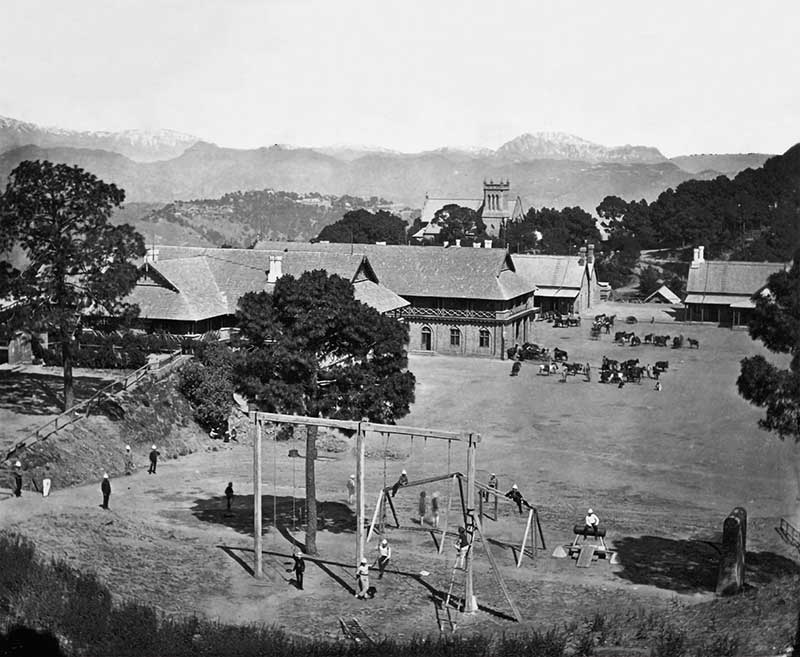
Clicked in 1885 by Col James Henry Erskine Reid and taken from the ‘Macnabb collection,’ this photograph beautifully captured the army barracks and the men around in what looks like a nice sunny day in Kasauli with snowy mountains forming the backdrop. The Christ Church building is clearly visible in the background. These were the days when you could get a clear view of the magnificent Himalayan snowy peaks from Kasauli. Not anymore.
The Commissariat Bungalow, 1885
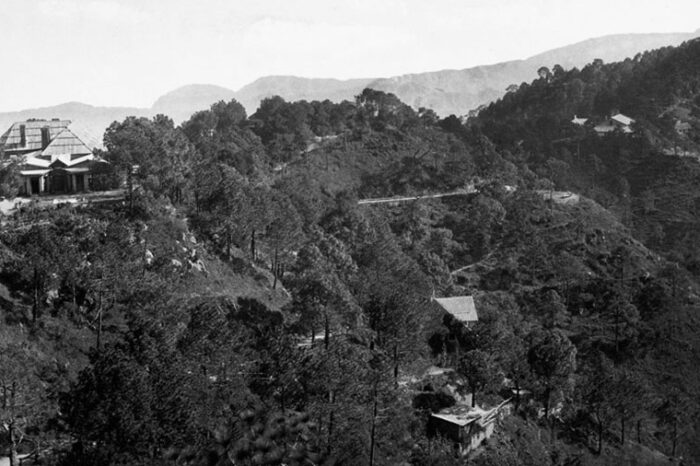
Taken in 1885, this image is from the ‘Macnabb collection,’ and titled ‘The Commissariat Bungalow.’ The photographer is unknown.
The General’s House, 1885
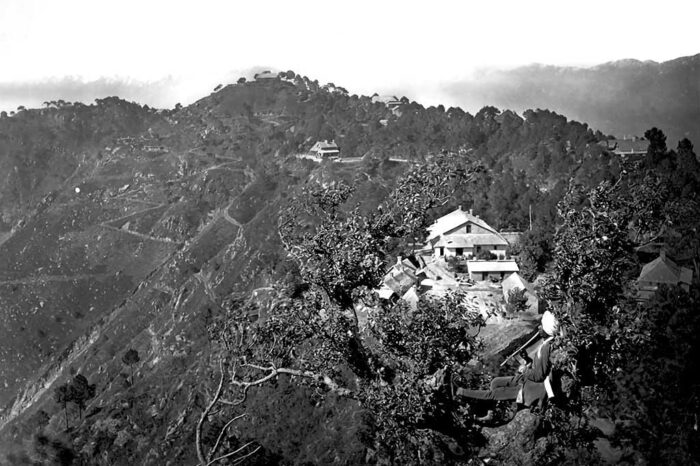
Here is another bungalow picture from the ‘Macnabb collection,’ and titled ‘The General’s House.’ Interestingly, we have this man sitting and playing a flute right at the top of a tree overlooking the bungalow and the hills beyond.
The Church (where I was married), 1885
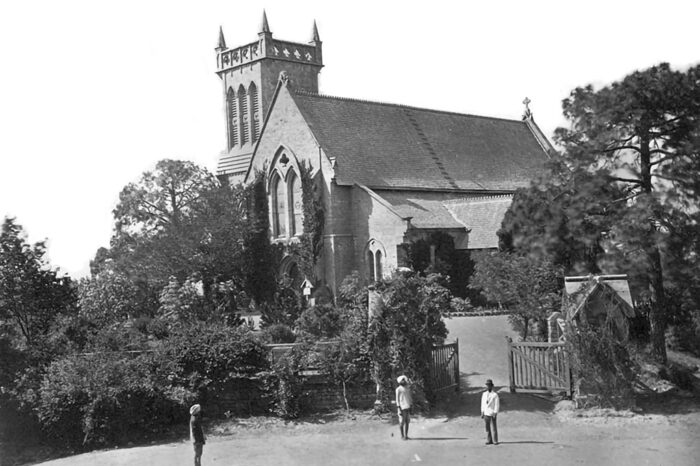
This photograph of the Christ Church by Col James Henry Erskine Reid was titled ‘The Church, (where I was married).’ Reid had married Florence Macnabb in the church here in 1883. Reid had travelled in the mountains and other parts of India and named his album of photographs as Macnabb Collection after his wife. One can see there was no clock in the church tower up to this point of time.
Church, 1868
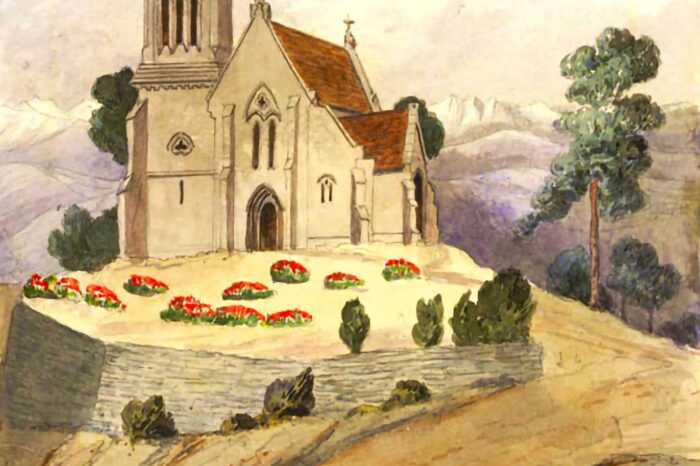
This beautiful watercolor of the Christ Church was drawn by Stanley Leighton on November 25, 1868 and titled it ‘Church at Kassowlie between Simla and the plains, looking towards the hills.’ It is the only colored image in this collection.
Christ Church, 1889
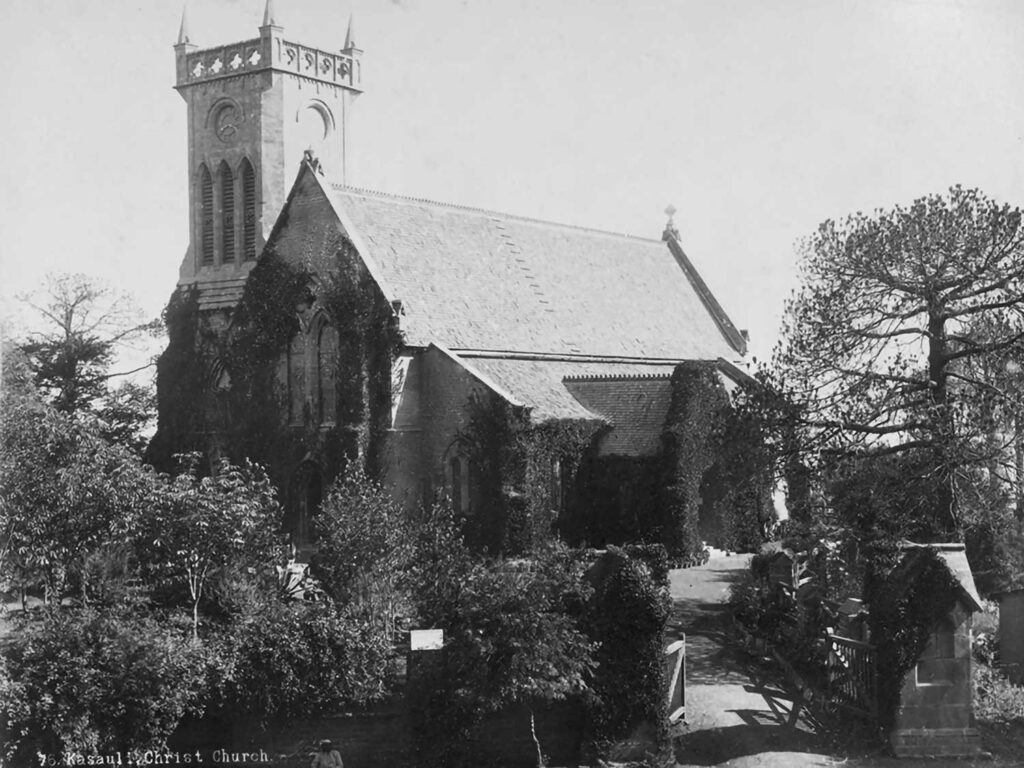
Taken from the collection ‘Album of photographs of Burma, India and Egypt,’ here is another old photograph of the Christ Church taken in 1889. One can see the clock in the church tower.
Native Market Bazaar, 1889
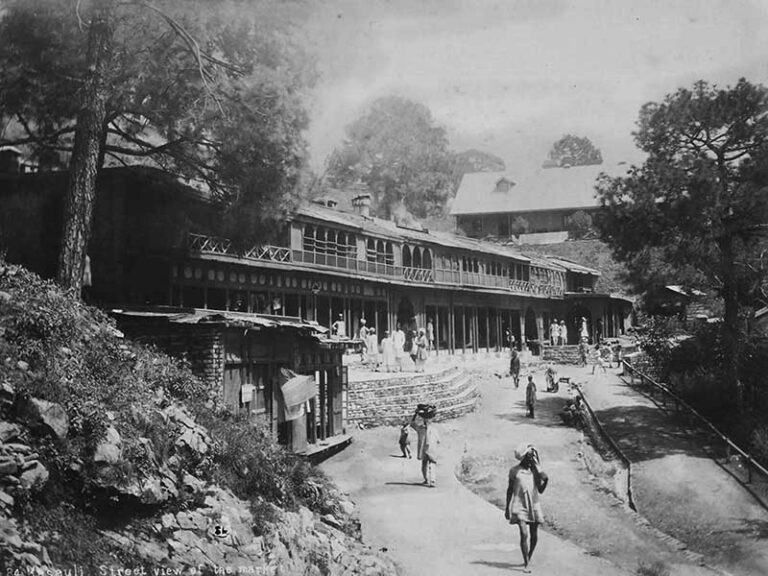
This is how the Kasauli bazaar looked like. Taken in 1889 and from the collection ‘Album of photographs of Burma, India and Egypt,’ the photograph captured the Kasauli bazaar some 130 years ago. One can see the locals standing outside shops and others on the road. The bazaar, meant for the local residents, was located beyond the present-day Heritage Market in Kasauli. Today, only one of these buildings remain at this location.
Tapp’s Nose, 1889
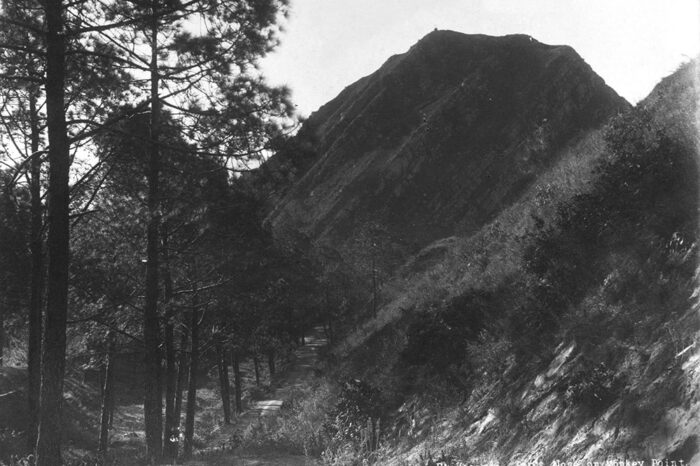
This one is Kasauli’s Monkey Point or Tapp’s Nose as it used to be called. The highest point of Kasauli was named after Colonel H T Tapp, who was posted in Sabathu and served as a political agent to the Simla hill states from 1836 to 1841, and carried out the first survey of Kasauli before it was founded.
Clicked in 1889, this image is also from the collection ‘Album of photographs of Burma, India and Egypt.’
Club House and Recreation Ground, 1889
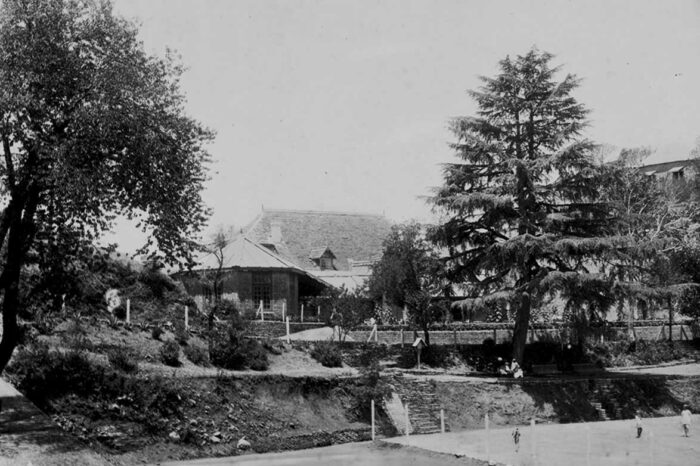
Titled ‘Club House and Recreation Ground’ and clicked in 1889, this image of Kasauli Club is from the collection ‘Album of photographs of Burma, India and Egypt.’ The club was founded in 1880 as ‘Kasauli Reading and Assembly Rooms’ and renamed Kasauli Club in 1898.
Lawrence Asylum, Sanawar, 1865
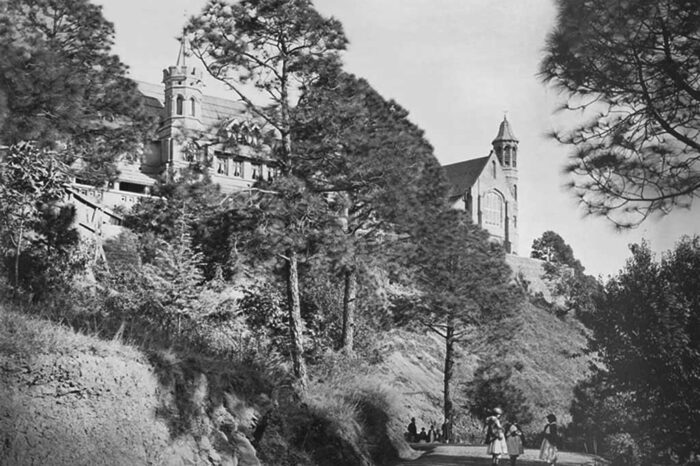
Clicked in 1865 by Samuel Bourne, it’s a photograph of the Lawrence school in the nearby Sanawar.
Some children, who appear to be students, can be seen, in two groups, on a road leading to the school building. The school was founded in 1847 by Henry Lawrence, a British army officer, for the orphans of British soldiers.
The photographer, Samuel Bourne, had set up a studio ‘Bourne and Shepherd’ in Shimla in 1863 and his collections contain one of the rarest images of that time.
(The credit for all the images goes to the British Library, London and the New York Public Library)



